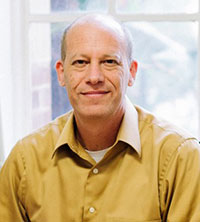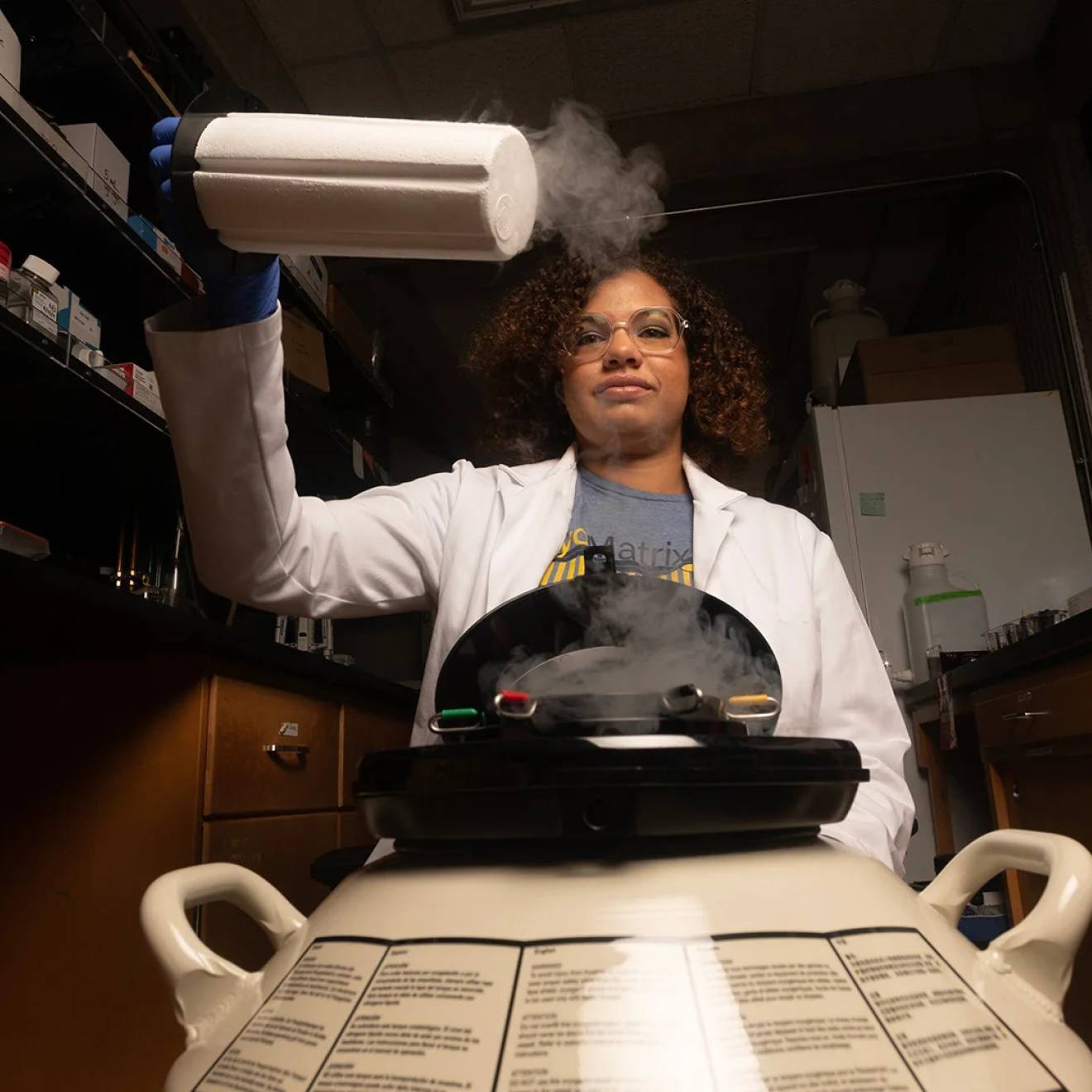Kathleen Kelleher, UCLA Blueprint

The little boy struggled with dyslexia. So, once, had John Rogers. Both were whip-smart. But that is where the similarities stopped.
Rogers attended Mar Vista Elementary School, tucked into a leafy West Los Angeles suburb of tidy homes a few miles from the Pacific Ocean. The youngster went to a summer camp in Inglewood. Rogers worked his way into Princeton University. The boy was being held back in elementary school because he could not read. Rogers never forgot him.
In the first grade, Rogers, now a top researcher at UCLA, had tried to read by interpreting stories through illustrations and photos. When his mother and his teacher both discovered his dyslexia, it was his mother who worked diligently to help him overcome it. Later, as an instructor at the Inglewood camp during a summer break from college, Rogers could see that the youngster in his charge was extraordinarily bright, but it was also clear that he had very few of Rogers’ advantages. The kid was flunking.
“The juxtaposition of this young boy’s life to my own focused me in on how our educational system plays out in ways that are fundamentally different based on the neighborhood you grow up in,” Rogers said. “I became more immersed in trying to understand these systems … and make a difference.”
For the past 17 years, Rogers, director of UCLA’s Institute for Democracy, Education and Access (IDEA) in the Graduate School of Education and Information Studies, has devoted his research and writing to inequalities in education, community-organizing for school reform and analyses of education policy and opportunity in learning gaps. His work is driven by a desire to understand what causes inequities and how parents can act together to change policies and build support for improvement.
The importance of time
A key factor, he decided, was time. Specifically: How many hours do teachers spend instructing students? How many school days each year are students engaged in valuable learning?

Credit: UCLA
To learn how time for academic instruction varies among high schools, Rogers and Nicole Mirra, a UCLA postdoctoral scholar, surveyed a demographically representative sample of some 800 California teachers during the 2013-14 academic year. Their report, “It‘s About Time: Learning Time and Educational Opportunity in California High Schools,” showed significant differences when they compared low-poverty schools, low- and mixed-poverty schools, and high-poverty schools, based on the percentage of students receiving free or reduced-price lunches.
The comparison showed that teachers at high-poverty schools spent nearly 10 fewer days every year instructing academic classes than teachers at low-poverty schools.
The study also showed:
- Teachers in high-poverty schools were more likely to report that academic instructional time was eroded by problems with school facilities, lack of access to technology and libraries, classroom lockdowns, standardized test preparation, teacher absences and uncertified or insufficiently qualified substitute teachers.
- Three to four times more students at high-poverty schools than at low-poverty schools struggled with unstable housing, hunger, lack of medical and dental care, and other social and economic stressors. Students at high-poverty schools faced a 39 percent chance that life problems would decrease their time for academic learning, in contrast to a 13 percent chance for students at low-poverty schools.
- Teachers at high-poverty schools suffered more class-time interruptions caused by unplanned events, such as phone calls from the front office. For some, these disruptions consumed up to 30 minutes a day of class time.
“I’m trying to push my students toward academic excellence in the time that we have,” one teacher told the researchers, “but with so many pressures to handle, and with the combination of traumas that my students are exposed to and are constantly experiencing, sometimes … (it becomes) overwhelming.”
These findings show something important: Inequality in learning time is hurting some of California’s most vulnerable students. That, Rogers said, is indefensible.
No one would tolerate an education system that, as a matter of policy, forces economically deprived students to stop learning two weeks before an academic year ends — or that sends poor students home 30 minutes before classes let out, he said.
Indeed, unequal learning time is at the heart of an ongoing class-action lawsuit filed last year by the American Civil Liberties Union against the California Department of Education. The lawsuit asserts that the state’s high-poverty schools fail to address factors that reduce actual learning time.
The need for change
In his book “Learning Power: Organizing for Education and Justice” (Teachers College Press, 2006), Rogers argues that understanding inequality is not enough. Researchers, he wrote, must work to bring change. “Change demands an energized politics, led by communities that too often experience the ill effects of inequality.”
Two weeks of lost learning every year can put high school students at a serious disadvantage when it comes time to apply to college. It costs them the academic power to compete. “Unequal schooling,” Rogers said, “is both cause and effect of unequal power relationships.”
But in looking at high school graduation rates and the percentage of students who complete courses required for admission to UC and CSU, the goal of graduating all students ready for college will not be easy to meet.
In March, the LAUSD learned that three-quarters of its 10th graders taking college prep courses were not on track to graduate because they were not getting C grades. A later analysis found 53 percent were not likely to meet the requirements. At a Board of Education meeting in June, members decided to allow the students to pass the college prep courses and graduate with D grades. But students who get the Ds will nonetheless be ineligible for admission to UC or CSU universities.
Rogers argued at the board meeting that students should have access to the college prep curriculum nonetheless. He told the board that it should provide students the tutoring and uninterrupted learning time it would take to perform well in the classes.
School board member Monica Garcia, who represents LAUSD District Two, which has both high- and low-performing schools, credits Rogers with keeping the board focused on maintaining access to the college prep curriculum for everyone.
To reduce the inequality in academic time that harms economically disadvantaged students, Rogers said, a logical step would be to lengthen their school days and school years. Teachers, he said, should ensure that the learning time is rich, engaging and protected from disruptions. Support for such remedies, he said, needs to come from the communities where affected students live.
Students in high-poverty communities also lose more organized after-school learning time than their more affluent peers, including time during summers.
“A lot of what we talk about,” Rogers said, “speaks indirectly to community schooling. It is shorthand for after-school programs, whole or extended learning time, creating health and other services on site.”
Read the complete story in UCLA Blueprint’s fall 2015 issue.

